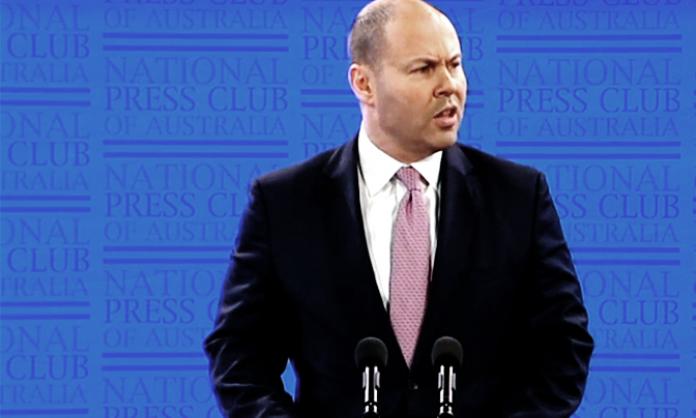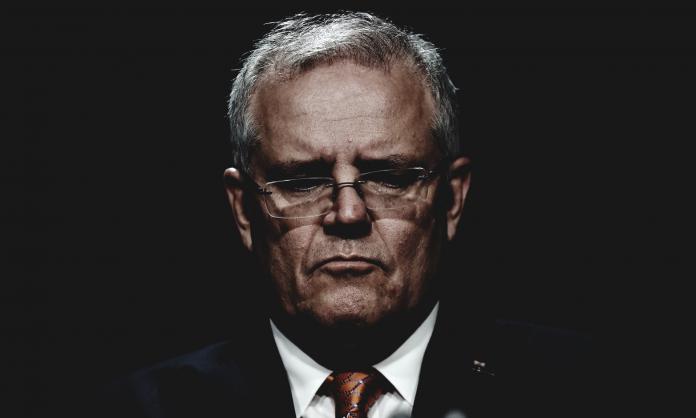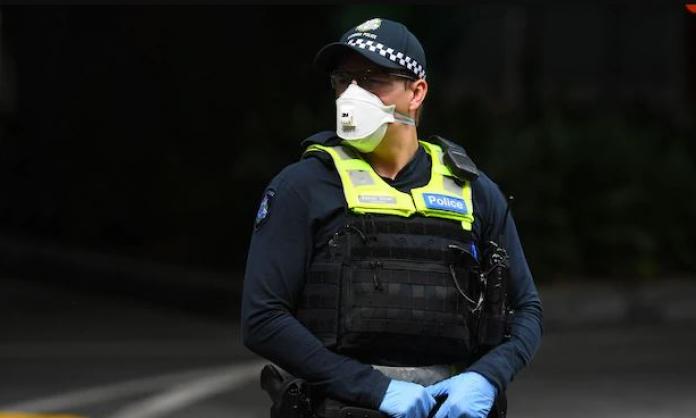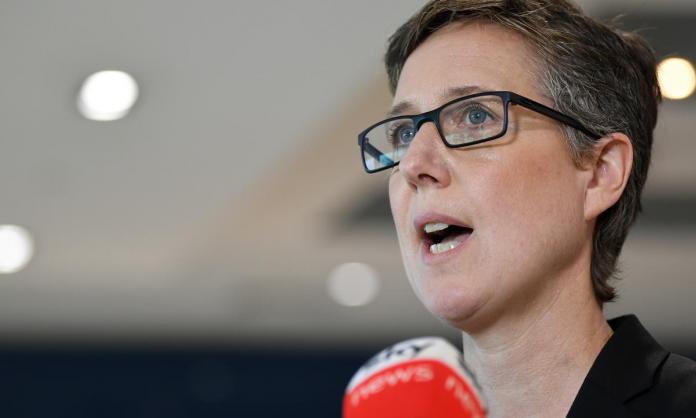On 24 September, we’re going to find out what the “new normal” is.
That’s when the “temporary, targeted” increase to the JobSeeker and Jobkeeper welfare payments will be abolished, according to the government. Anyone who’s still unemployed in late September will be cast back on to the pre-coronavirus welfare payment rate of $40 per day.
Before the crisis, it was well known that Australia’s unemployment payments were too low to live on. For many, they didn’t even cover rent. When the Australian Council of Social Services (ACOSS) surveyed of Newstart and Youth Allowance recipients last year, 84 percent of their respondents said they regularly skipped meals. Two-thirds didn’t use heating in winter.
ACOSS’ Senate submission makes for excruciating reading: one student reports having only $8 a day left to live on, after 80 percent of their income is spent on rent. Unemployed workers describe being forced to move to high unemployment areas so that the city’s housing costs won’t drive them into homelessness.
Last year, the charity Shelter found that living in any capital city on Newstart would mean spending 77% of income on rent (135% in Sydney); Anglicare found only two rental properties in all of Australia listed at a rate affordable for Newstart recipients.
The COVID-19 crisis has revealed that the government knew its previous welfare payments were unacceptably low, despite decades of callous mistreatment and public shaming of the unemployed. When official unemployment was relatively low and very few people were on the dole for any prolonged period, the government’s mistreatment of welfare recipients could be ignored, even by those who found it objectionable. But as mass unemployment has become a fact of life again, the government quickly moved to double the payment – no doubt fearful of the political consequences of suddenly exposing millions of people to a welfare system that even the Business Council of Australia has labelled “inadequate”.
When Josh Frydenberg spoke at the Press Club in early May, he was asked by reporters if he seriously intended to throw millions of people back onto the pitiful old Newstart rate when the government’s arbitrary deadline hit in September. Frydenberg gave nothing away. But the government has only three options.
It can extend the payment increase, either by raising the base rate of the unemployment benefit or extending the temporary additional payment – both moves it is loath to contemplate publicly. Either option would mean conceding that for decades Australia’s unemployment payments have been inhuman, as well as adding to the government’s enormous debt.
It can have its “snapback” to the previous payments while millions of people have been forced out of work by a devastating economic crisis that is still unfolding through the world economy. That would mean potential social chaos, as millions of workers are slammed into humiliating penury.
Or, of course, it can find the magic policy fix that restores Australia’s economy – already stagnant before this crisis – back to normal. And while it’s at it, it will have to fix the world economy too.
Unless it finds an economic genie to grant these wishes, there is simply no “normal” to which the government can return. The old rate of unemployment payments, combined with the new economic reality, would risk creating a whole new social crisis.
It’s not just a matter of unemployment payments. The Australian economy fits into a world system that is fracturing before our eyes. The government talks as if, after a few months of lockdown, it can ease restrictions, put up some billboards about washing hands and get the old world back. But it’s gone. The desire to resurrect it might unleash the social struggle and political polarisation that have been so notably absent in Australia as decades of economic growth concealed ever more entrenched inequalities and economic distortions.
Let’s think through some of the economic changes that will make a return to normality impossible.
Australia’s university sector has been redesigned to manufacture education for export. International student fees made up around a quarter of the university sector’s revenue. Successive governments have cut direct funding to universities, and apart from seeking patrons in big business and the military, universities have been encouraged to drain the wallets of international students to make up the shortfall.
At the end of 2019, there were more than 200,000 Chinese international students in Australia: in absolute terms, that’s the world’s third-biggest flow of international students between any two countries. And that was only 28 percent of the overall Australian international student population.
The prevalence of international students has affected the political life of campuses – ambitious student politicians increasingly construct massive voting blocs out of international students, and pro-Hong Kong independence protests led to major controversies at Australian universities throughout 2019.
The virus has destroyed that model. For now, campuses are in semi-hibernation. Even if universities resume full in-person teaching before Christmas, it’s hard to imagine that hundreds of thousands of students will be flying in any time soon, or paying the exorbitant fees that prop up this sector of the economy. No matter what economic policies are pursued, there can be no return to normal in Australia’s important higher education sector.
And what of tourism? Last summer, the bushfires came perilously close to causing mass death in the picturesque regional towns and caravan parks embedded in forests up and down the east coast. Tourism capitalists, big and small, were already panicking before COVID-19 about whether Australia’s summer tourism industry could be revived. Now we know the answer. Barring a miraculously speedy worldwide rollout of a completely safe and effective vaccine or treatment, the international tourists will not be returning this summer.
That’s why Tim Harcourt of the University of New South Wales warned the BBC that the pandemic, having caused “the end of globalisation as we know it”, would damage not only manufacturing and shipping but “people-based industries like education and tourism”.
Australia is therefore very exposed. As industry lobby groups regularly point out, education services for international students are Australia’s third largest export by value, after iron ore and coal. The industry brought in over $32 billion in 2017, an important source of revenue in Australia’s slowing pre-crisis economy. According to the Department of Foreign Affairs and Trade, tourism accounts for 3.1 percent of Australia’s GDP.
And this is all before we think about the unfolding disaster in hospitality. Even if the eased lockdowns don’t result in mass death, as long as social distancing limits small venues to single digit numbers of customers, there will be long-term job losses on an enormous scale.
So what does this mean for the September deadline, or other attempts to revert to pre-crisis policies? Even if the coronavirus had been confined to China, and even if it had only affected the international movement of people, the impact on Australia’s economy would have been profound. But now it’s endemic around the world, including in Australia. It’s spreading in abattoirs and nursing homes. It has thrown tens of millions out of work in the world’s main economic centre and Australia’s third largest trading partner, the US.
Australia’s unemployment rate has roughly doubled since the crisis took hold in early March. A much higher rate of unemployment is almost certainly here to stay for the medium term, along with cuts to wages and conditions in surviving businesses.
More than that: the old economic structure of Australian capitalism is being thrown into chaos. It is not at all clear how the tourism and education sectors will survive, in what changed form and on whose dime; it’s not clear who, if anyone, will be buying Australia’s exports. Australia’s economy, its cities, its welfare payments and even its politics were cultivated to fit into a global order that is undergoing a permanent change. It’s simply not coming back on 24 September.
Australian workers were used to being treated badly, charged through the nose for basic services like child care and humiliated when forced to depend on government payments to survive unemployment, as long as the economy was basically holding up. For now, temporary subsidies, extra payments and inconsistent slowdowns of the most brutal extremes of capitalist social norms – like evictions – have stemmed the sense of panic and betrayal. But as the grinding effects of long-term unemployment set in, that temporary calm may fray.
And if in four and a half months the government throws Australian workers onto the pitiful pre-crisis dole payments, charges them exorbitant prices for privatised services like child care again and withdraws subsidies like Jobkeeper – in the middle of a wave of mass unemployment and during a global economic crash – the consequences will not be pre-crisis normality.
All this, of course, assumes that there will not be a new outbreak of the disease. In pursuit of a return to a normality that has vanished forever, the government, with the right wing press baying at its heels, is moving towards a reckless economic reopening that may revive the possibility of a public health disaster. It’s still possible that returning to “normal” economically will bring on a renewed health nightmare.
Whatever happens, policy makers are not going to open their hearts to human suffering and embrace a new spirit of fairness and egalitarianism in the long term. This means there will have to be a fight. The establishment will try to force workers to accept a new and appalling reality – a process they are starting now – characterised by a devastatingly under-resourced social welfare system in a time of economic collapse. Our side will need to fight if we want to maintain our living standards and working conditions.
The old economy – inflated by international tourism and education, with its mistreatment of the poor hidden by its generally high living standards – is not coming back. Any attempt to bring it back must be understood for what it is: a new attack that must be resisted.











